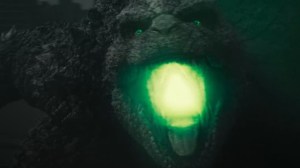Author H.P. Lovecraft has been an icon in the world of horror literature for more than a century, but, unlike other genre authors, his works haven’t found as much success when translated into live-action endeavors. Similarly, director Richard Stanley has been highly regarded among the genre community since his films Hardware and Dust Devil in the early ’90s, but has avoided directing any narrative genre stories for the better part of 30 years. Luckily for fans of both creators, Color Out of Space marks for the perfect partnership for a film that is nightmarish, disturbing, and has Nicolas Cage screaming about Alpacas.
Videos by ComicBook.com
Led by father Nathan (Cage), the Gardner family opts to leave behind the hustle and bustle of the city to live off the land in a small Massachusetts community. When a mysterious object comes crashing from the sky, their land becomes bountiful, yet engulfs the entire landscape in an otherworldly glow, igniting madness in those who witness it as it begins to birth unholy abominations.
Lovecraft conjured dozens of terrifying tales throughout his career, which includes creating the mythical monster Cthulhu, though only a handful of those tales have become successful films. As opposed to figures like Edgar Allan Poe or Stephen King, whose stories have regularly been effectively adapted, Lovecraft’s work pushed the genre into a variety of horrifying realms, blending fantasy, science fiction, and sheer terror to craft wholly original experiences. Other than director Stuart Gordon, who delivered Lovecraft adaptations Re-Animator and From Beyond, filmmakers have failed to capture the essence of the author’s work, with Stanley pulling off the seemingly impossible task of turning a story about colors emanating from a meteorite that fall outside conventional description into a cohesive and riveting experience.
A key component of the storyline is the overall tone and look of the landscape, which Stanley manages to make both beautiful and frightening. Despite the inherent nature of bringing an indescribable color to life for a film being impossible, the tones and hues that travel through the landscapes give the entire experience the perfect ethereal gloom that honors the source material. Given that tone is so important for all Lovecraft stories, Stanley overcomes one of the story’s biggest hurdles.
If the look of the film isn’t engaging enough, the monsters conjured by Stanley’s team take things to an entirely new level. While some audiences might distillLovecraft’s work, Color Out of Space included, to being described merely as “body horror,” this is doing a disservice to the abominations depicted in this film. To attempt to describe the beasts seen in the film would be a fruitless endeavor, as words can’t convey its pulsing, glistening, and oozing horrors, while any number of adjectives would fail to accurately describe them. More than mere movie monsters, the creations on display feel more like crimes against nature, managing to be both revolting and gorgeous in their own macabre manner.
As far as the storyline itself goes, the beats of the overall narrative seem somewhat unnecessary as the journey doesn’t do much to forge any new paths within the genre. By the nature of the premise, the Gardner family goes through many of the expected and anticipated paths that we’ve seen many other isolationist endeavors have explored, even if the look and tone of the film is that much stronger than its peers.
Cage won an Academy Award for Best Actor with 1995’s Leaving Las Vegas, but to say that the actor has become a “living meme” in recent years would feel like an understatement. No matter what the role might be, Cage throws himself into it with a degree of commitment that his contemporaries fail to match, often resulting in his roles making him appear as a cartoon when interacting with more subdued on-screen partners. Luckily, Stanley managed to find the perfect vessel for his story in Cage, as it was a requirement that his character descend into madness, yet still retain charm and charisma. Much like he did with 2018’s Mandy, Cage found the perfect balance of outlandish and endearing in a character we both care for yet revel in seeing become a complete mad man. The rest of the cast is engaging enough, but it’s hard to compare to Cage’s feverish clamoring about alpacas.
Any filmmaker willing to take on Lovecraft knows that they’re fighting an uphill battle, but Stanley’s first return to the genre world since being fired from The Island of Dr. Moreau in the mid-’90s proves that he is absolutely fearless, making for a welcome return. While the narrative is relatively mundane and predictable, Color Out of Space has easily become the most beautiful horror film of the year, a title which it will likely hold for the next 11 months. Thanks in part to tapping Cage as a muse who was willing to descend into a full-blown mania, Stanley has proven with Color Out of Space that he is the heir apparent to the legacy of Lovecraft, making for an experience that needs to be seen as big and as loud as possible to fully plunge yourself into the same madness experienced by the film’s characters.
Rating: 4 out of 5
Color Out of Space lands in select theaters on January 24th.









